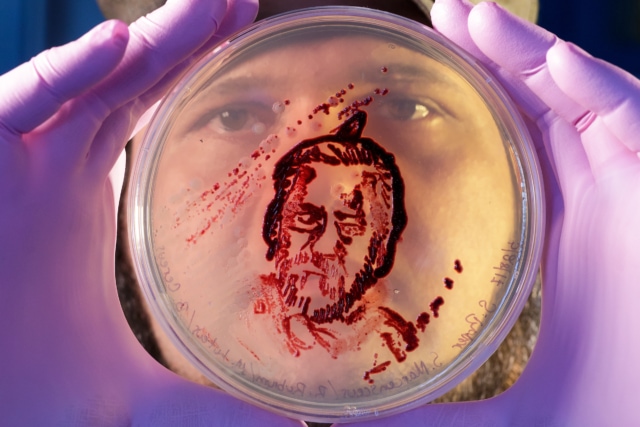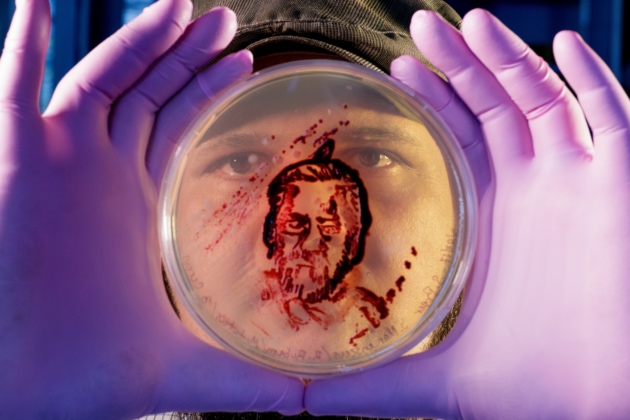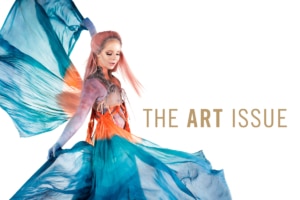Creative culture: Bacterial art project combines art and science
Art majors are usually easy to spot by the paint splatters and clay smudges on their clothes. Not Sam Roper, though. His medium demands strict neatness.
He is creating works of art from bacteria.
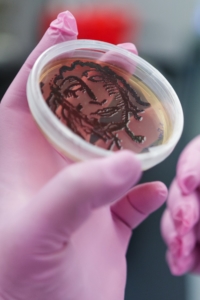
“I have to take certain steps to make sure that I’m not contaminating it and that it is not contaminating me,” he says, describing the aseptic environment of the microbiology lab that doubles as his studio.
Roper dons gloves and uses a sterilized instrument called an inoculation loop as a stylus to move around the bacterial cells, each of which is approximately 10 times smaller than those found in the human body. The agar plate that serves as a canvas is shielded by a laminar flow hood that sucks the air away from it and leaves Roper only a tiny space for his hand to work. Each plate incubates for 48 hours at 98.6 degrees – the average normal temperature of the human body – and then is refrigerated to halt the growth of the living material. As it dries, the outlines emerge.
“It’s odd to realize that we can bend this living material to our will,” says Roper, a senior from Gainesville, Georgia, “but it shows that anything can be a work of art if all of the pieces come together.”
Roper, 36, says he was originally a self-taught artist, “dabbling in a bit of everything, including tattooing.” He was working as a custodian at Brenau when – in an echo of Good Will Hunting – he began to linger a little longer in some of the art classrooms.
“At first, I was very nervous about approaching any of the professors and possibly bothering them,” he recalls, “but everyone was so nice and helpful. I started asking questions.”
Roper, whose wife, Amanda, works in the Trustee Library, decided to enroll as a student. “I quickly realized how much I didn’t know,” he says. “Professors here give you the theme, but they also teach you how to work in your own way and take pride in your craftsmanship. They teach you the rules so you can break them. They’re also very honest, which we need in the art world. There’s no coddling going on, believe me.”
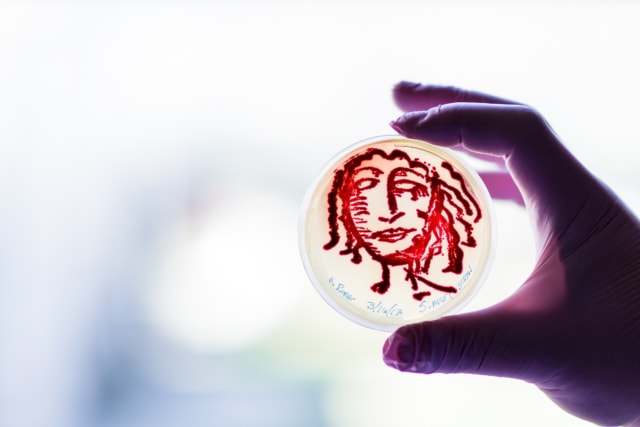
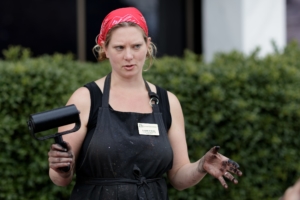
Roper shares that honesty, according to Claudia Wilburn, director of Brenau’s studio art program and Roper’s advisor. “Sam gives good advice to his peers. He encourages them to think about the connection between concept and process.”
Roper’s janitorial work experience, which involved moving from building to building each day, inspired him to think of the campus in holistic terms. “I wondered why there isn’t more overlap between departments,” he says. For example: art and science.
“There is a lot of science behind art in general, such as how color affects the eye and your emotions,” he says. “Artists and biologists can work together and learn from each other. Drawing a human body can educate you about its mechanics, how muscle structure works.”
Roper heard a segment on NPR about bacterial art, so he approached Jessi Barker Shrout, WC ’04, a cytotechnologist and assistant professor of biology, about devising a project. “I figured she might think I was crazy, but she proved very open-minded and encouraging,” he says.

Shrout, who has a background in dance, says, “I was happy to figure out a way to meld the creative arts with science.”
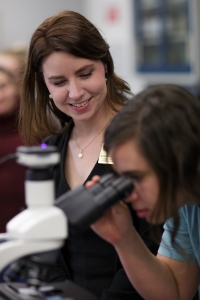
She ordered some Serratia marcescens, a bacteria that has a characteristic pink or red color and often accumulates as scum in sinks and bathtubs, as it eats soap and shampoo residue.
“It won’t cause a pandemic,” she says, “but it can be a human pathogen, so we need to take precautions with it.”
Roper smiles at this observation. “See?” he says. “It’s a little dangerous. Art should be a little dangerous and push the envelope.”
His senior show in April communicated this idea, leaving behind the bacteria but reaching back to his experience in drawing and tattooing. He developed a series of “flash tattoos,” or tattoo designs first printed or drawn on paper or cardboard.
In the lab, meanwhile, he adroitly cranked out designs of abstract patterns, some trees and, finally, a portrait of Louis Pasteur, the 19th-century French microbiologist, chemist and inventor of pasteurization. “Next, I want to do portraits of female microbiologists,” says Roper, who planned to showcase his work in shadow boxes.
The project, incidentally, was not his first encounter with Serratia marcescens.
“I’m pretty sure that, as a janitor, I scrubbed it out of some dormitory tubs,” he says with a laugh. “I prefer to make art with it.”
